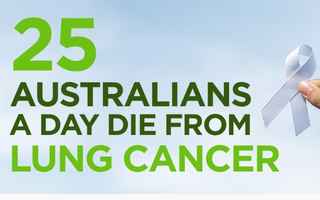Lung cancer is a leading cause of cancer-related deaths worldwide, yet it receives surprisingly little attention in the public eye. One of the reasons for this disconnect lies in the nature of its symptoms, which can be strikingly obvious yet often dismissed or not taken seriously.
The Alarming Reality of Symptoms
Patients with lung cancer frequently experience symptoms like persistent cough, chest pain, and shortness of breath. These signs are hard to ignore and often lead individuals to seek medical help. However, the very visibility of these symptoms can result in them being downplayed. People may attribute these issues to smoking or general health problems, believing that they are simply the consequences of lifestyle choices rather than serious warning signs of cancer.
This attitude can delay diagnoses and treatment. When individuals report clear symptoms, they may be met with skepticism, leading to a frustrating cycle where their concerns are brushed aside. This can be especially disheartening for non-smokers, who may find their symptoms trivialized due to the prevailing stigma around lung cancer.
The Stigma of Blame
The misconception that lung cancer primarily affects smokers further complicates the issue. The narrative that lung cancer is a self-inflicted condition fosters an environment where patients feel they must justify their illness. This stigma not only affects how society views lung cancer but also impacts how patients perceive their own condition.
For those experiencing significant symptoms, the added burden of societal judgment can lead to emotional distress. Instead of receiving support, patients may feel isolated or ashamed, reinforcing the notion that their symptoms are not serious enough to warrant concern.
Shifting Perspectives
To address these issues, we need to shift how we think about lung cancer and its symptoms. Here are a few ways to foster understanding and compassion:
- Educate on Symptoms: Awareness campaigns should emphasize that obvious symptoms of lung cancer deserve immediate attention and should not be dismissed as typical health issues. Education about the realities of lung cancer can empower patients to advocate for themselves.
- Encourage Prompt Action: Medical professionals should be trained to take all reports of respiratory symptoms seriously, regardless of a patient’s smoking history. This can lead to earlier diagnoses and better treatment outcomes.
- Support Non-Smokers: It’s essential to highlight that lung cancer does not discriminate. By focusing on the fact that many lung cancer patients are non-smokers, we can combat the stigma and encourage a broader understanding of the disease.
Conclusion: A Call for Compassion
Lung cancer’s obvious symptoms should be taken seriously, yet the prevailing attitudes often lead to misunderstanding and neglect. By changing the narrative and fostering open conversations, we can ensure that patients are listened to, believed, and supported. It’s time to recognize that lung cancer is a serious disease that can affect anyone, and every symptom deserves attention and compassion. Let’s work together to give lung cancer the understanding it truly needs, so patients don’t have to fight this battle alone.





